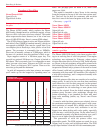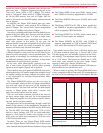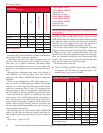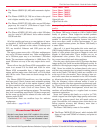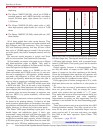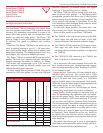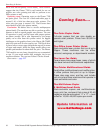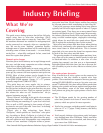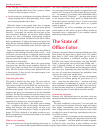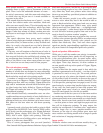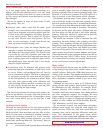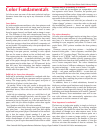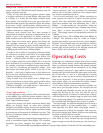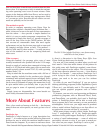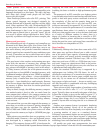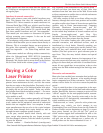
58
Entire Contents © 2006 Prog
ressiv
e Business Pub
lications
.
Copying of Pages Prohibited.To Order: 800 247 2185 or www.betterbuys.com
✔ Not long ago, no desktop color printer could perform
automatic double-sided work. Now, however, almost
all have at least an option to do so.
✔ In the recent past, no desktop color printer offered fin-
ishing (stapling and/or hole punching). Now a small
but increasing number have them.
What this means is that people don’t have to migrate
upward to a color copier-printer just to get more upscale
printing, even if they don’t especially need the copier
function — previously, by contrast, this was quite a com-
mon occurrence. However, the extent to which desktop
printers are now challenging copier-based products
should not be overstated: the latter are still able to offer a
better combination of high performance and paper han-
dling. But the desktop models are certainly getting closer,
and the prices ar
e remarkably lower than the copier ver-
sions.
Keep in mind also that color copier prices have fallen in
response to the challeng
e from the printer world — with
a discount, you can now get a connected, network-ready
copier-based machine for about $12,000. Although this
ma
y not sound like a bargain, it is pretty low by tradition-
al standards of this market.
We won’t be talking further about the copier-printer
alternative here, but you can get complete details in
The
Color Copier Guide
(see back cover for ordering informa-
tion).
We will, however, discuss some printers with copi-
er functionality, if they are still, first and foremost, crea-
tures of the printer world.
What this guide offers
This guide is divided into four parts. We start with our
Editor’s Choice selections (page 2), which is a list of
color printer models we feel provide the very best value.
Immedia
tel
y afterw
ar
d comes the
V
endor & Product
Profiles section (pages 3–56), which introduces you to the
suppliers and gives our assessments of all the individual
products. The Profiles section also includes charts of con-
sumables costs for the leading color laser models; these
c
har
ts gi
v
e y
ou an idea of which printers are the most
economical to oper
a
te on a cost-per
-pa
ge basis.
The third part of the guide — the article you’re reading
now — examines the state of the market, discusses tech-
nology and features, and advises briefly on how to go
about buying a color laser printer. Finally, our grid-charts
(pa
g
es 70–124) a
t the bac
k of the guide provide an at-a-
g
lance comparison of
features and pricing of all models
covered in the guide.
What we are assuming
Keep in mind tha
t w
e will not be spending much time in
this article explaining printer terms and concepts that are
not color-specific but apply equally to regular black-only
models. So if you have very little technical grasp of print-
ers — for example, if you don’t really understand what’s
meant by the word “PostScript” — you may want to refer
to the separate Better Buys guide on black-and-white
office laser printers (see back cover). As well as focusing
on black-only models, that guide serves as a printer
primer in general.
Nevertheless, we will be reminding you about a few
printer basics in this article, so what follows should be
reasonably easy to understand if you consider yourself
moderately printer-proficient.
The State of
Office Color
Desktop color lasers aimed at non-specialized users have
been around for more than a dozen years. The market
dates bac
k to 1993,
when QMS (now part of Konica
Minolta) introduced a landmark machine priced at
$12,500; color lasers had previously cost over $20,000.
Today, a good printer can cost less than $2,000, and —
with a growing number of entry-level models priced
under $1,000 — the machines are becoming more afford-
able every year. Operating costs have also fallen, making
the price of using these machines less prohibitive than
was once the case (more on this la
ter).
The main priority in vendors’ product development
strategies is to continue getting the price down, as it is
cost — more than any other factor — that has so far kept
these machines in something of a niche. As the prices
have continued to plunge below $1,000, color laser print-
er
s ha
v
e become attractive to a broader audience, possi-
bly taking the place of some black-and-white models.
Overcoming objections
However, any widespread move to introduce color into
mainstream business documents will run up against two
objections
.
The main roadblock is that even if you put aside the
cost of buying the machine, full-color pages will always
have higher consumables costs than black-and-white
ones. Urging corporate America to switch to color is akin
to asking it to r
aise its hard-copy operating costs by a fac-
tor of four or more.
Vendors never tire of pointing out the commercial ben-
efits of
color — making sales pr
oposals mor
e har
d-hit
-
ting
,
f
or example — but these gains are harder to quanti-
fy than the costs. And there is also a hidden cost that
Better Buys for Business



